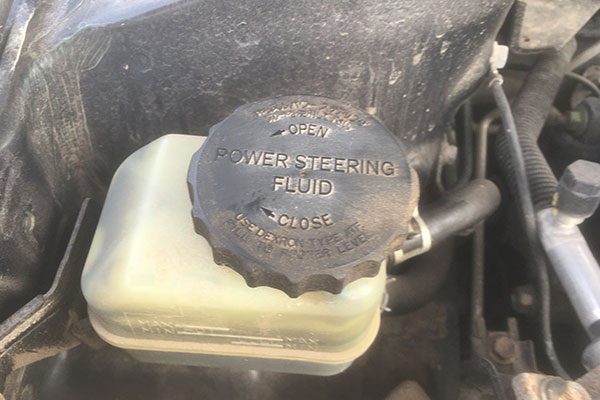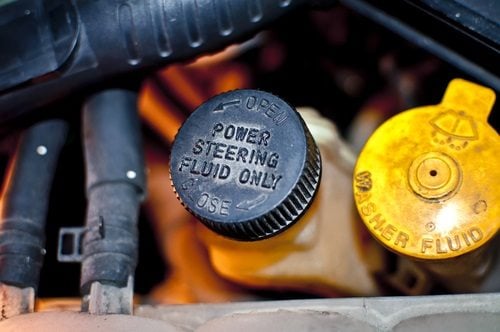To check power steering fluid, locate the power steering fluid reservoir and remove the cap. Check the fluid level against the markings on the dipstick or reservoir, ensuring it falls within the recommended range.
Maintaining the proper level of power steering fluid is crucial for the smooth functioning of the vehicle’s power steering system. Regularly checking the power steering fluid ensures that it is at the optimal level and helps identify any potential leaks or issues.
In this blog post, we will guide you through the simple process of checking the power steering fluid level in the car. By following these steps, you can ensure the longevity and efficiency of the power steering system, avoiding costly repairs in the long run. So, let’s dive in and learn how to check power steering fluid in your vehicle.
Contents
- 1 Why is Power Steering Fluid Important?
- 2 How to Check Power Steering Fluid
- 3 Frequently Asked Questions
- 3.1 How Often Should I Check My Power Steering Fluid?
- 3.2 What Happens If I Don’t Check My Power Steering Fluid?
- 3.3 How Do I Check The Power Steering Fluid Level?
- 3.4 What Should The Power Steering Fluid Level Look Like?
- 3.5 Can I Use Any Type Of Power Steering Fluid?
- 3.6 What Should I Do If The Power Steering Fluid Is Low?
- 4 Conclusion
Why is Power Steering Fluid Important?
Power steering fluid is a hydraulic fluid that transmits power in the power steering system. It helps reduce the effort needed to turn the steering wheel, making driving more comfortable and safer. Regularly checking and maintaining the fluid level can prevent steering problems and prolong the life of your power steering system.
Signs of Low or Contaminated Power Steering Fluid
Before we dive into the steps to check the power steering fluid, it’s important to recognize the signs of low or contaminated fluid:
- Difficulty Steering: If your steering wheel hard to turn or feels stiff, it could be a sign of low power steering fluid.
- Noisy Steering: Squealing or whining noises when turning the wheel may indicate low fluid levels or air in the system.
- Leaking Fluid: Puddles or spots of red or pink fluid under the car could be a sign of a power steering fluid leak.
- Burning Smell: A burnt smell coming from the engine bay can indicate that the power steering fluid is contaminated or overheating.

Credit: blog.amsoil.com
How to Check Power Steering Fluid
First of all you have to gather following tools –
- Clean cloth or paper towels
- Funnel (optional)
- Power steering fluid (check the vehicle’s manual for the recommended type)
Step-by-Step Guide to Checking Power Steering Fluid
- Locate the Power Steering Fluid Reservoir:
- The power steering fluid reservoir is usually located near the engine and is labeled with a cap marked “Power Steering.” Consult the vehicle’s owner’s manual if you have trouble locating it.
- Warm Up the Engine:
- Start the vehicle and let the engine run for a few minutes. This warms up the power steering fluid and gives you an accurate reading.
- Turn Off the Engine:
- After warming up the engine, turn off the vehicle. It’s safer to check the fluid level with the engine off.
- Clean the Reservoir Cap:
- Use a clean cloth or paper towel to wipe any dirt or debris from the power steering fluid reservoir cap to prevent contamination.
- Remove the Cap:
- Unscrew or unclip the reservoir cap. Some caps may have a dipstick attached, while others may require you to check the fluid level directly in the reservoir.
- Check the Fluid Level:
- With Dipstick: Wipe the dipstick clean, reinsert it fully, then remove it again to check the fluid level. The dipstick will have markings indicating the optimal range (usually “MIN” and “MAX”).
- Without Dipstick: Look inside the reservoir to see if the fluid level is between the “MIN” and “MAX” lines on the side of the reservoir.
- Inspect the Fluid Condition:
- The power steering fluid color should be a clear, red, or pink. If the fluid looks dark, cloudy, or smells burnt, it may be contaminated and need replacing.
- Add Fluid if Necessary:
- If the fluid level is below the “MIN” line, add the recommended type of power steering fluid until it reaches the “MAX” line. Use a funnel if necessary to avoid spills.
- Replace the Cap:
- Securely replace the reservoir cap and wipe away any spilled fluid with a clean cloth.
- Test the Steering:
- Start the vehicle and turn the steering wheel from lock to lock a few times to circulate the new fluid. Listen for any unusual noises and check for leaks.

Credit: autoexhaustandtyres.co.uk
Tips for Maintaining Power Steering Fluid
- Regular Checks: Check the power steering fluid at least once a month, or more frequently if you notice any symptoms of low fluid.
- Fluid Type: Always use the type of power steering fluid recommended in vehicle’s owner’s manual.
- Watch for Leaks: Regularly inspect under the vehicle for signs of power steering fluid leaks and address them promptly.
- Professional Inspection: If you notice persistent steering problems or fluid contamination, have the power steering system inspected by a professional mechanic.

Credit: www.fredbeans.com
Frequently Asked Questions
Here are some FAQs about the checking power steering fluid –
How Often Should I Check My Power Steering Fluid?
You should check power steering fluid at least once a month to ensure it is at the proper level.
What Happens If I Don’t Check My Power Steering Fluid?
Neglecting to check the power steering fluid can lead to decreased steering performance and potential damage to the power steering system.
How Do I Check The Power Steering Fluid Level?
Locate the power steering fluid reservoir, remove the cap, and use the dipstick or level markings on the reservoir to check the fluid level.
What Should The Power Steering Fluid Level Look Like?
The power steering fluid level should be within the designated range on the dipstick or between the “Min” and “Max” markings on the reservoir.
Can I Use Any Type Of Power Steering Fluid?
It is essential to use the type of power steering fluid recommended by the manufacturer to ensure optimal performance and prevent potential damage.
What Should I Do If The Power Steering Fluid Is Low?
If the power steering fluid is low, add the recommended fluid gradually, checking the level frequently to avoid overfilling.
Conclusion
Checking the power steering fluid is a simple yet essential part of vehicle maintenance that can help ensure a smooth and safe driving experience. By following these steps, you can keep your power steering system in top shape and avoid potential steering issues. Regular maintenance not only extends the life of the vehicle but also enhances the driving comfort and safety.